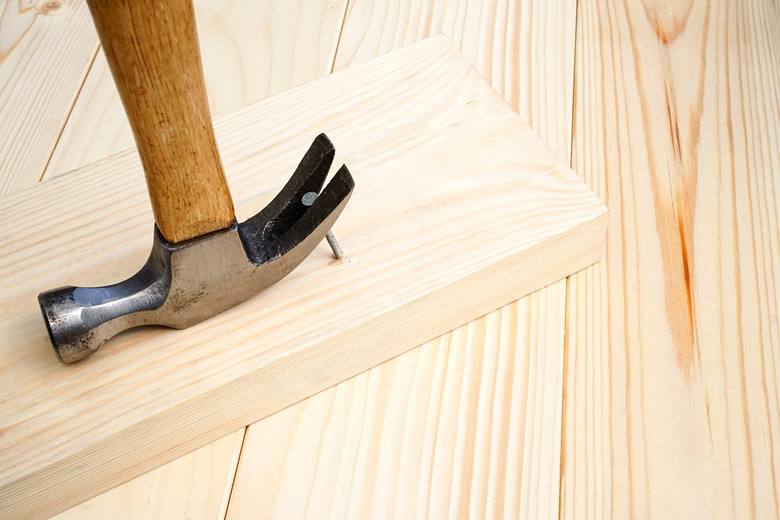Why Use A Double-Headed Nail?
We may receive a commission on purchases made from links.
Double-head nails, also known as duplex nails, don't have side-by-side heads to make it more likely that your hammer will make contact when driving them. That might be a boon for some people, but duplex nails serve another purpose. The two heads are arranged one above the other on the shank, and the nails are used for temporary construction.
One of the original purposes for double-head nails was to construct scaffolding, so they are also known as scaffolding nails. Some other purposes for which builders use them are to construct concrete forms to attach temporary braces to walls and fences. They make it easier to take structures apart when their purpose has been served.
What Is a Double-Head Nail?
What Is a Double-Head Nail?
Double-head nails look like standard framing nails, and they come in the same sizes, ranging from 6d to 30d, or from just over 2 inches to 5 inches in length. They have a flat head just like a standard nail, but just underneath that is another one. When you drive the nail, you sink the lower head and leave the one above it sticking out of the wood. It gives your prying tool something to grip when you want to remove the nail.
Duplex nails come with a galvanized finish for use outdoors, and you can also find them with a bright, nongalvanized finish for indoor use. Bright nails tend to be slightly easier to drive, but they'll rust if you leave them outdoors for any length of time. Galvanized nails, on the other hand, are rust-resistant.
When to Use a Duplex Nail
When to Use a Duplex Nail
The purpose of a double-head nail is to be easier to pull than a standard one, and because the head protrudes from the wood, it isn't intended for permanent structures. Builders use double-head nails for such temporary structures as scaffolding and concrete forms because they have to disassemble them as soon as the house is painted or the concrete sets.
DIY builders can use double-head nails for the same purposes as well as others. For instance, when you're setting fence posts and you want brace them to keep them straight until the concrete sets, use duplex nails and the braces will be easier to remove. The same is true when you're doing interior framing and you need to brace a wall long enough to allow you to build the adjoining walls to support it.
Duplex Nails or Screws?
Duplex Nails or Screws?
These days, more and more builders use screws instead of nails, and because a screw is removable, it can serve the same purpose as a duplex nail. In fact, you can even buy duplex screws, which were patented in 2007, although the double head isn't really necessary on a screw since you can usually back out a standard screw even when it has sunk into wood or concrete.
The main advantage of duplex nails over screws is that they are cheaper, which makes them more cost-effective for large projects. On the minus side, a duplex nail may be easier to pull than a standard one, but it still takes more effort than it does to back out a screw with a drill.
